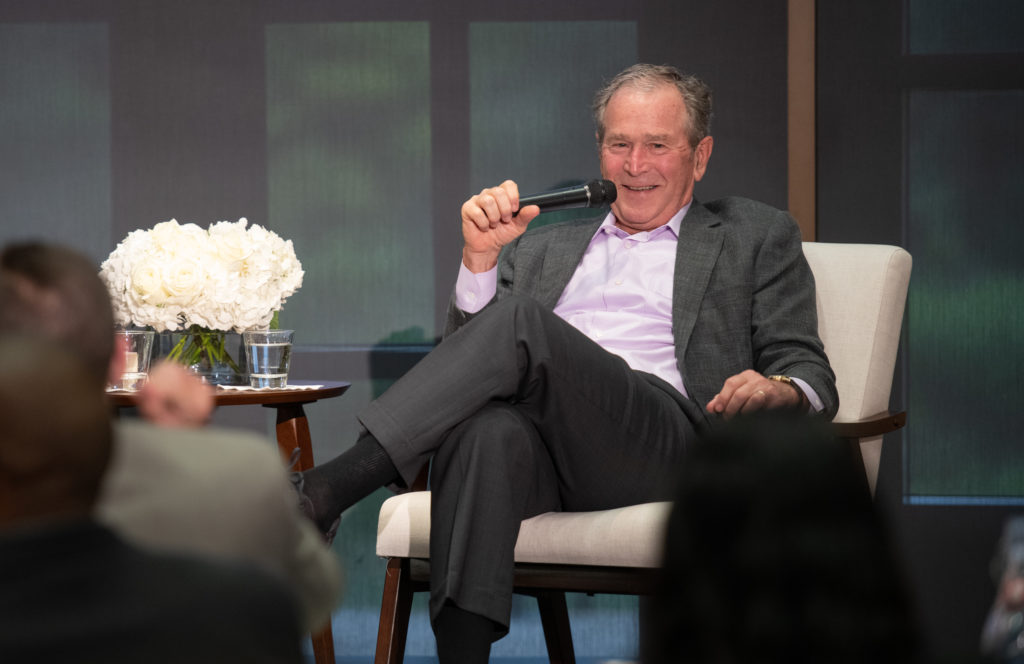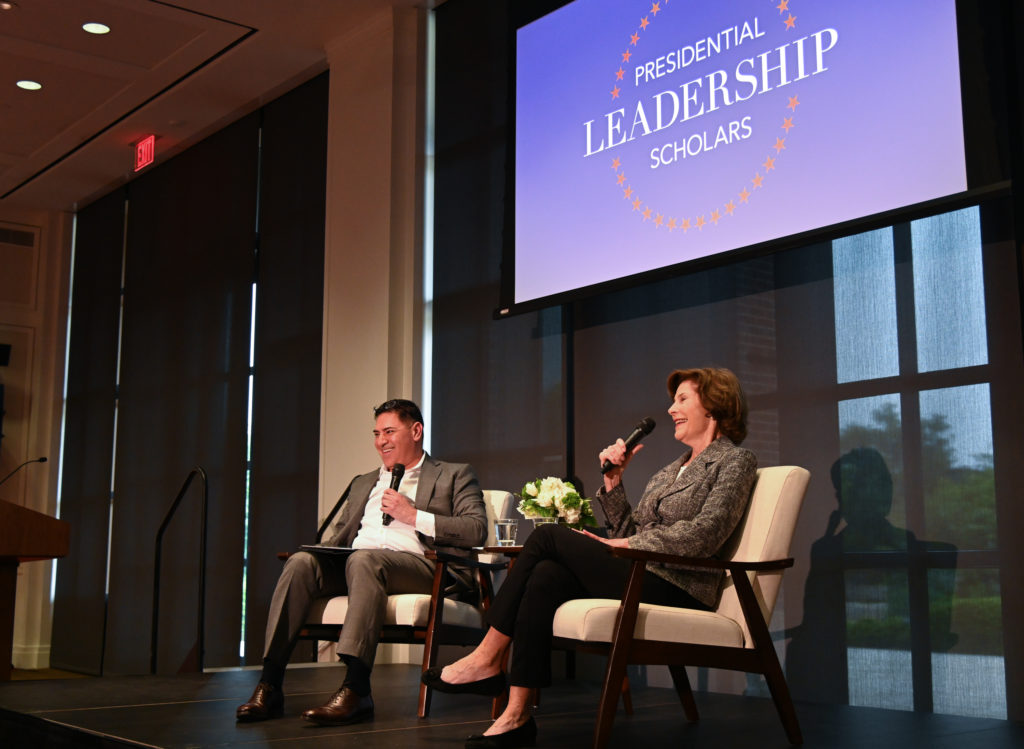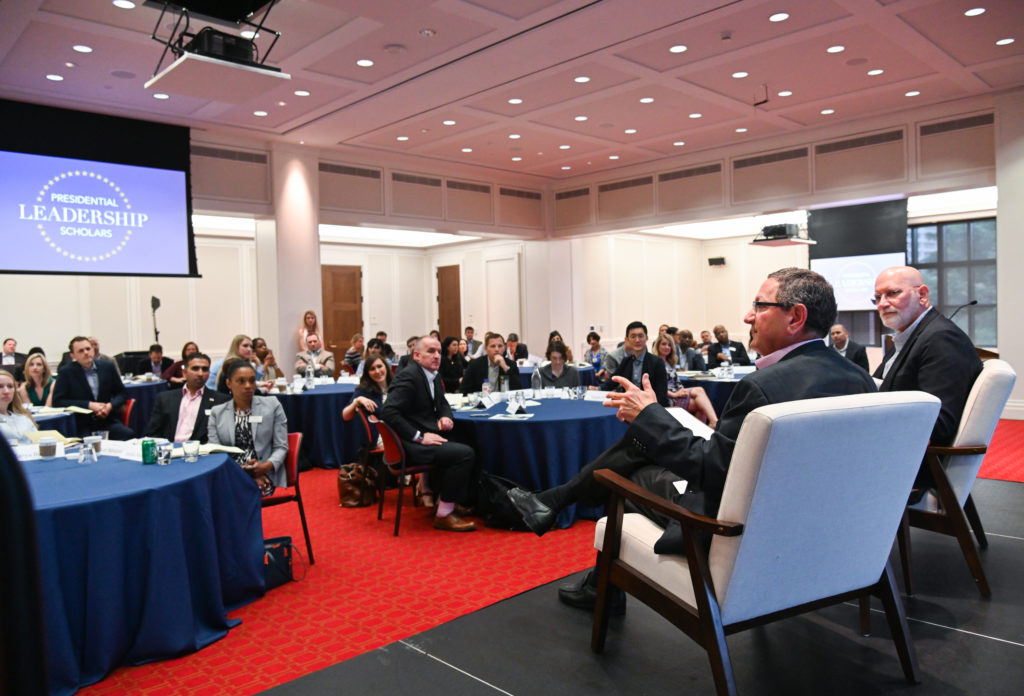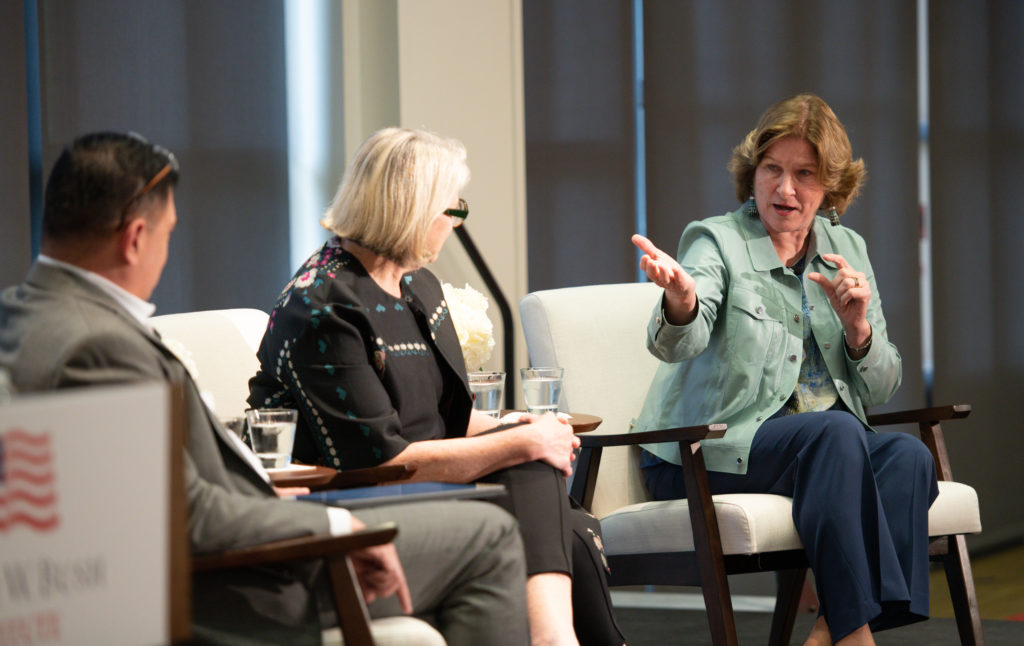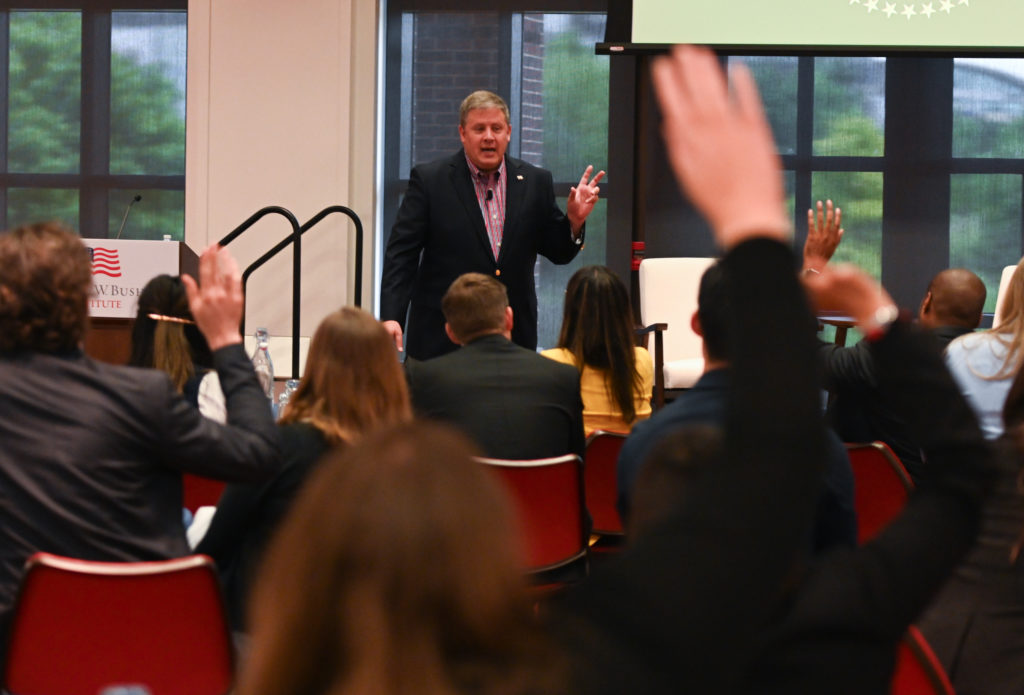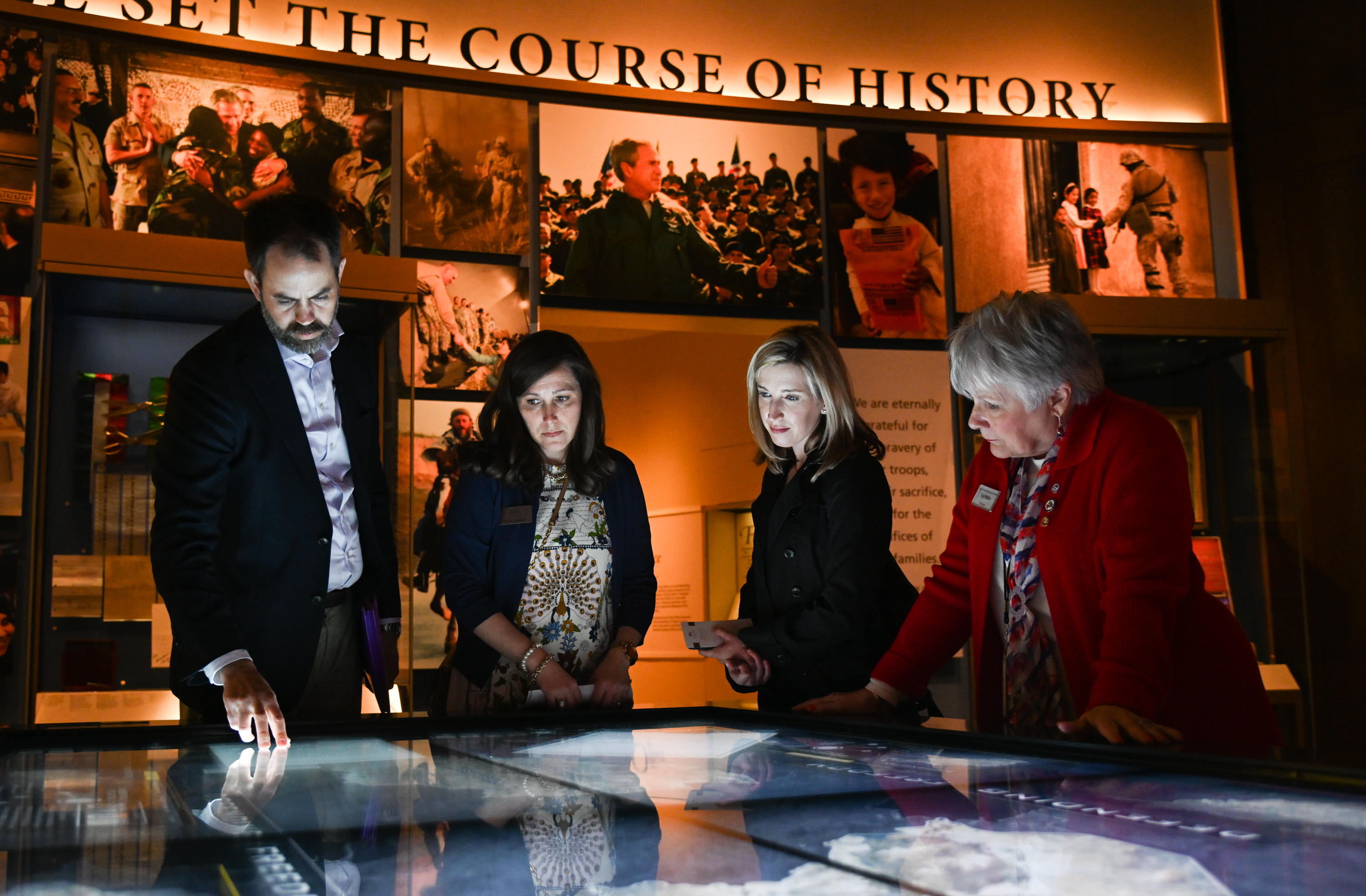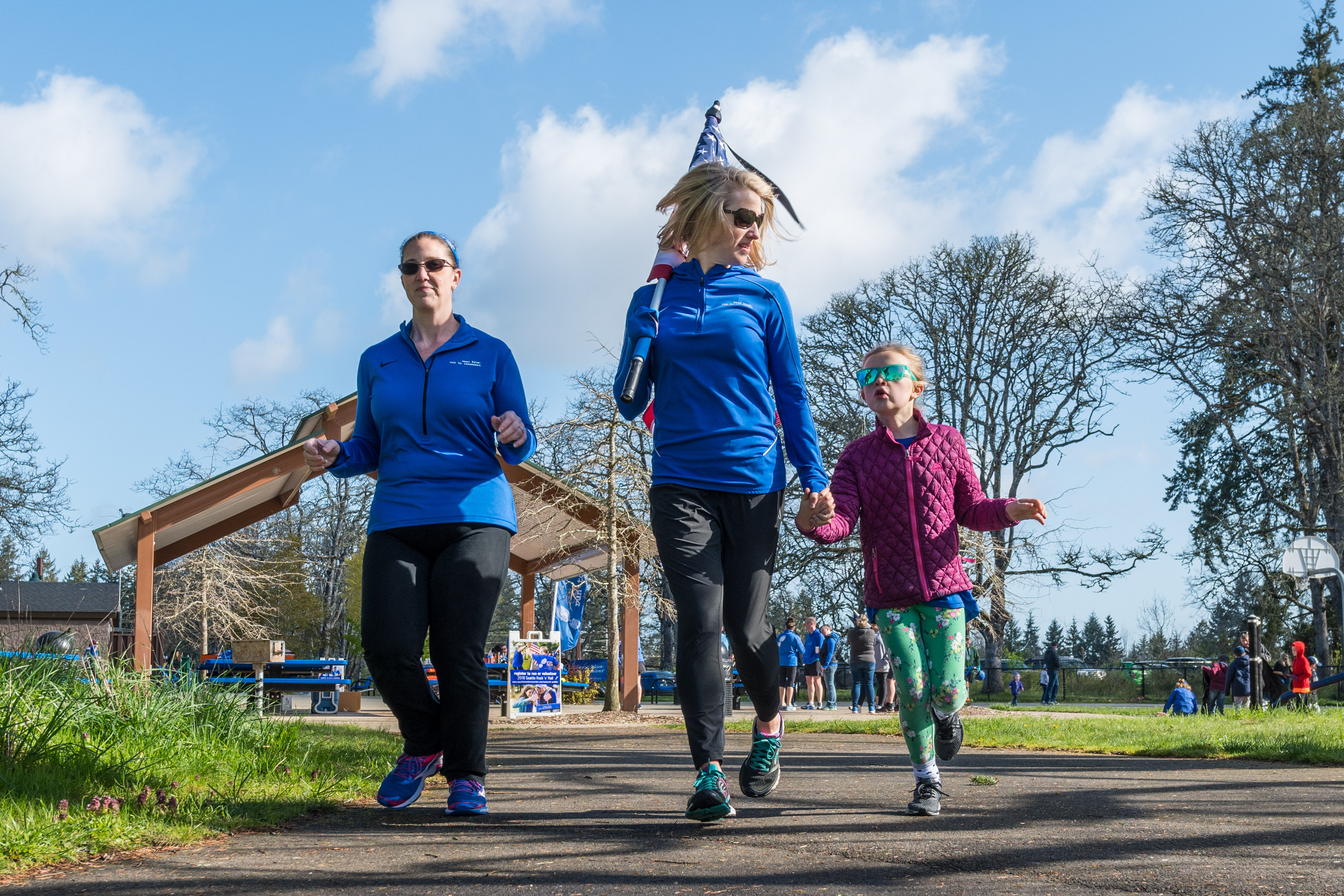I am the Executive Director of wear blue: run to remember and, more
importantly, a proud Army wife. I grew up with my husband, John, in Northern
California. We attended the same small Catholic elementary school, and over the
years, built a strong friendship. On December 27, 2003, I married Captain John
Hallett, a West Point graduate, and together we embarked on an amazing journey
as a military family. On the way, we were blessed with three healthy, happy
children: Jackson, Bryce, and Heidi.
John was an inspiring leader with
a tireless work ethic. He cared passionately for both his soldiers and his
family. He took command of a Stryker infantry company in November, 2008, and the
following summer deployed with his brigade to southern Afghanistan.
Like all good military stories,
three weeks after John left, our daughter Heidi was born. Three weeks after that,
I headed to my first military family meeting of the deployment.
With Heidi at my side, I sat down,
ready for the meeting, when I felt a tap at my shoulder. I looked over and saw
the Rear Detachment Commander, Frankie. I remember smiling and saying hello,
but he brushed aside my greetings and instructed me to come with him. I scooped
up my papers and the baby and we walked across a large field to the battalion
classroom. I kept demanding an answer.
“Tell me John’s okay,” I begged. “Tell
me John’s okay.” But, his face remained expressionless.
Two men in the Army’s formal
military uniform waited for me in the classroom. The gentleman on the right
held a white piece of paper and began to read, “The secretary of defense
regrets to inform you that your husband, Captain John L. Hallett, is believed
to have perished in the fires…” I stopped listening. I had a three-year-old, a
one-year-old, and a baby whom my husband had never met. They had to be wrong.
But they weren’t wrong. John was
killed on August 25, 2009, with three other brave soldiers on his way home from
a goodwill mission delivering medicine to a village with a cholera outbreak.
For our brigade, it became a deployment that claimed 41 lives. Eventually, 14
more were lost to suicide, including Frankie.
I was broken. Trying to piece
myself back together, I turned to the coping mechanism I had leaned on
throughout John’s military career: running. It was a tangible accomplishment in
a world that felt out of control. As I ran mile after mile, I slowly realized
that as I was running from the pain life had offered my family. I was running
to strength, hope, and confidence for the future.
Thankfully, I wasn’t alone. In
the middle of my personal grief, I worked with fellow military spouse, Erin
O’Connor, to form the national nonprofit wear
blue: run to remember.
We didn’t start with a vision,
just a need for community and healing. We leaned on what we knew, running, and
began to gather with a group of military spouses. The first time the group ran
together, we wore our husband’s blue PT shirts. We met up in a parking lot, unsure
and awkward, then went for a run around the airfield.
We came together for weekly runs
throughout the remainder of the deployment. As the unit came home from combat,
we realized that they too needed the space to heal. We sought a place of
understanding and common ground to build a new normal. Running with wear blue became that place.
wear blue: run to remember is now a national community that honors
the service and sacrifice of the American military. We support the men and
women still in uniform, honor and remember service members who have made the
ultimate sacrifice, and empower families of the fallen.
Since my engagement with the
Presidential Leadership Program, wear blue: run to remember has earned two
large grants that have allowed the expansion of the program from our flagship
chapter at Joint Base Lewis-McChord in Washington, to Fort Bragg, North
Carolina, and San Antonio, Texas.
The tragedy our family faced was
not one of chance. John chose to be in the military, well aware of the risks it
carried. John’s gift of his life became his children’s sacrifice. John’s
absence will cause Jackson, Bryce, and Heidi to walk with their own heartaches,
but the complexity of their emotions and life experiences has the potential to
mold them into extraordinary individuals.
But they cannot do this on their
own. They need their community to stand in support. My desire to provide that
community for them and other Gold Star Children is the driving force behind my PLS
Personal Leadership Project: wear blue:
run to remember’s Gold Star Youth Mentorship Program.
The Gold Star Youth Mentorship
Program pairs children of fallen military with current members of our Armed Forces
in a run-focused mentorship to build resilience, healthy coping mechanisms, and
a connection to their identities as survivors and military children. Each pair
joins the larger wear blue Saturday
Run community for four months of runs, focusing on goal setting, training for a
5K, learning about life of service, and building a lifelong friendship.
Thousands of runners across the
country run in blue every week. We have 50 running communities, 14 national
races, and over 50,000 runners. Each of wear blue’s programs are centered on
running to activate our abilities to be greater than our obstacles. Over the
past 8 years, we have honored over 10,000 of our nation’s fallen military
heroes, and impacted almost one million athletes as they have passed through
our tribute displays.
The Presidential Leadership
Scholars program has given voice and structure to our growing national mission.
The incredible network, authentic support, and earnest lessons have enabled me
to take my passion to the next level: creating a stable financial foundation,
expanded programming, and a broader national reach. Because of PLS, wear blue
is better equipped to support our military, their families, and the families of
the fallen.
